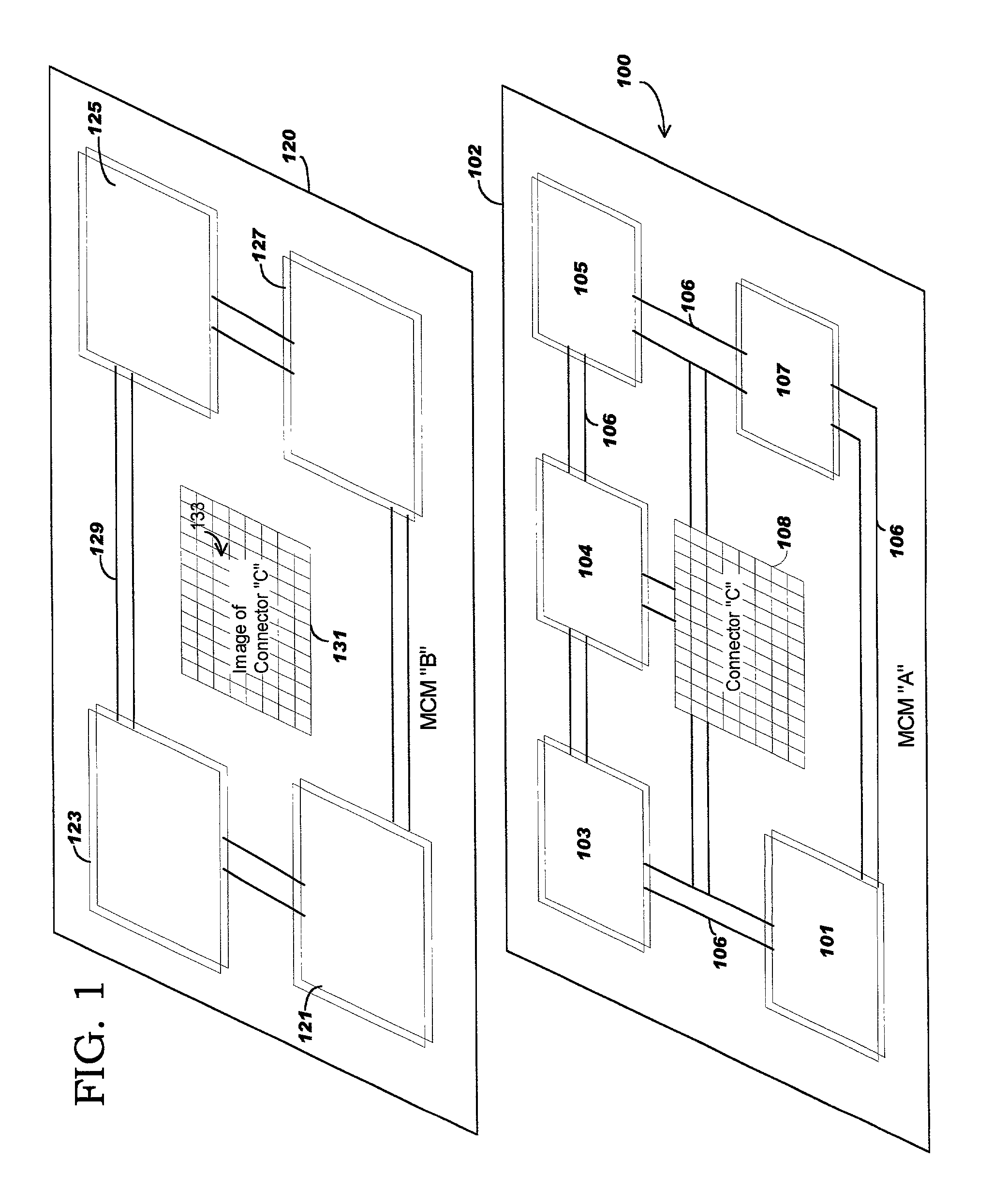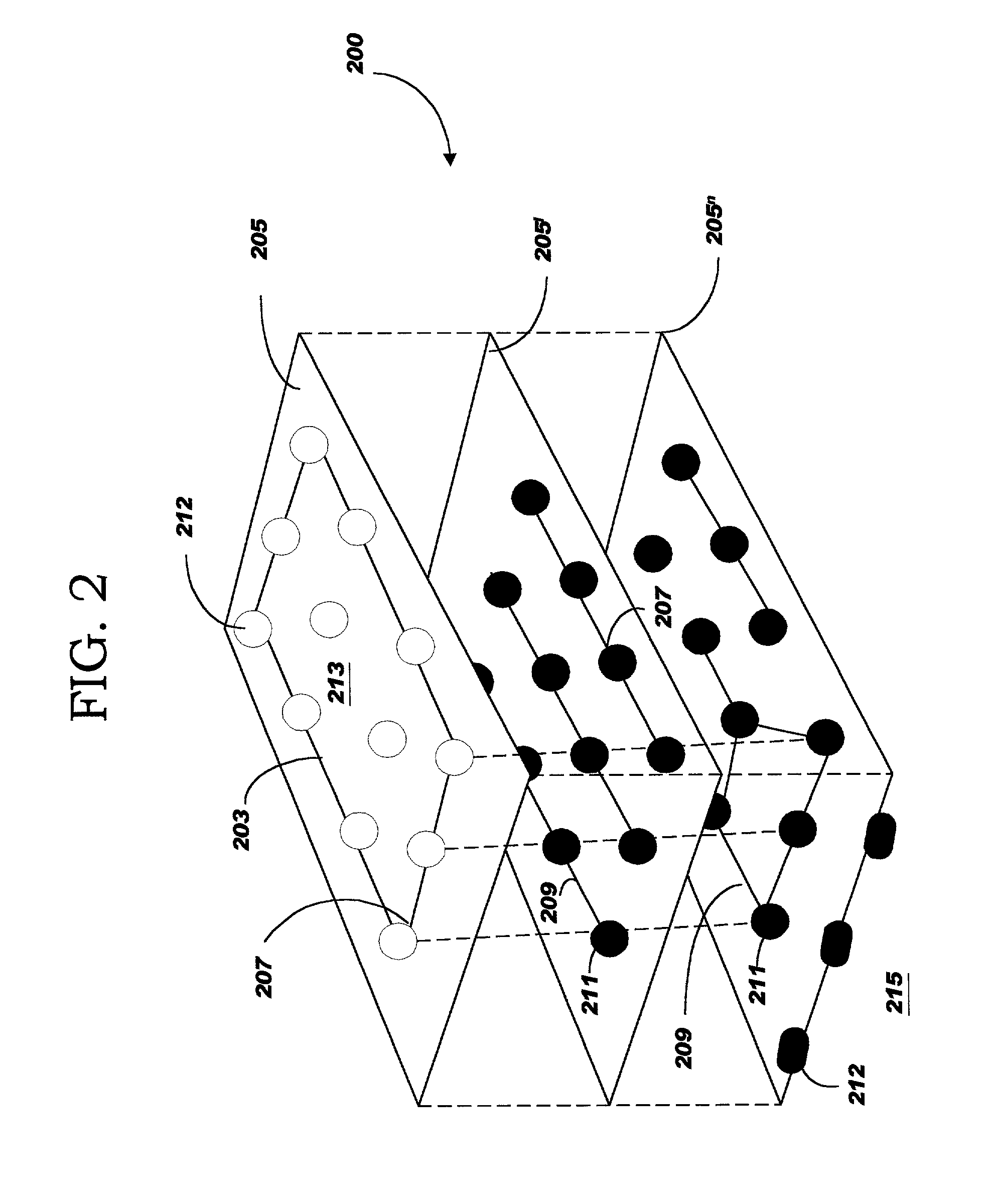Spacer - connector stud for stacked surface laminated multichip modules and methods of manufacture
a technology of spacer and connector stud, which is applied in the direction of printed circuit structure associations, solid-state devices, basic electric elements, etc., can solve the problem that the prior art does not disclos
- Summary
- Abstract
- Description
- Claims
- Application Information
AI Technical Summary
Benefits of technology
Problems solved by technology
Method used
Image
Examples
Embodiment Construction
[0015] In FIG. 1, a multichip module circuit board 100 comprises a dielectric member 102. In one embodiment, the member is a glass epoxy substrate, covered by a copper layer which is patterned by selective etching to form a wiring layer, including a signal wiring conducting layer 106. A photosensitive thermal setting resin in a solvent is applied to the surface to form an insulating resin layer. The solvent is evaporated from the resin by a pre-cure heating, followed by an exposure and development step to form photo via holes in the board. Thereafter, the resin is cured and the surface of the resin layer is planarized by grinding to provide a flat surface for subsequent processing as circuitization. The process for forming the substrate is more fully described in U.S. Pat. No. 5,766,825 assigned to the assignee of the present invention and fully incorporated herein by reference.
[0016] An assembly of components, 101, 103, 104, 105 and 107 are attached to the circuit board 102, using ...
PUM
 Login to View More
Login to View More Abstract
Description
Claims
Application Information
 Login to View More
Login to View More - R&D
- Intellectual Property
- Life Sciences
- Materials
- Tech Scout
- Unparalleled Data Quality
- Higher Quality Content
- 60% Fewer Hallucinations
Browse by: Latest US Patents, China's latest patents, Technical Efficacy Thesaurus, Application Domain, Technology Topic, Popular Technical Reports.
© 2025 PatSnap. All rights reserved.Legal|Privacy policy|Modern Slavery Act Transparency Statement|Sitemap|About US| Contact US: help@patsnap.com



